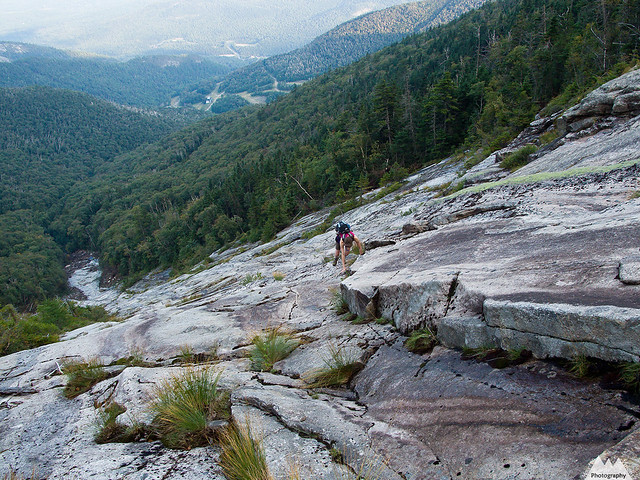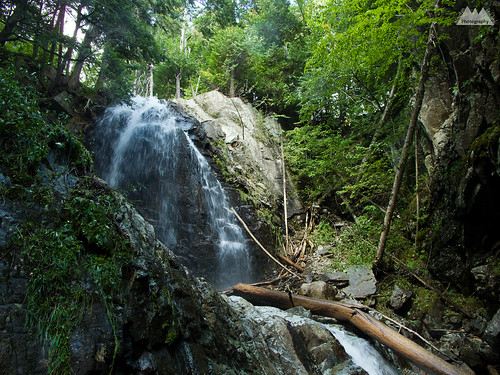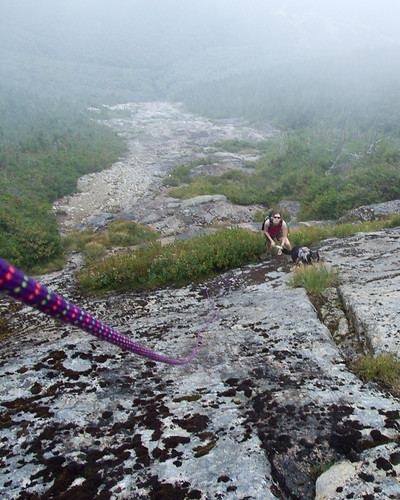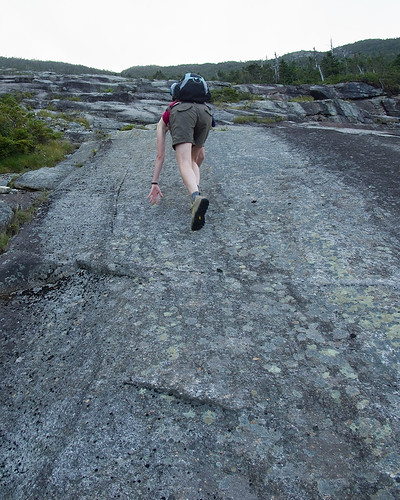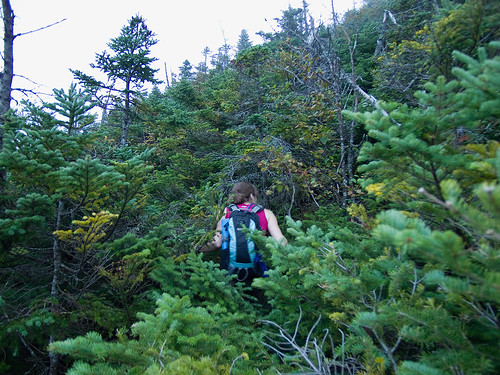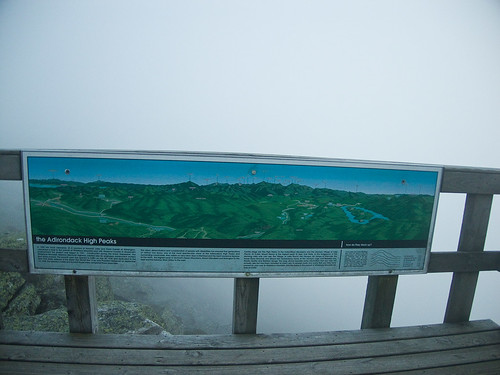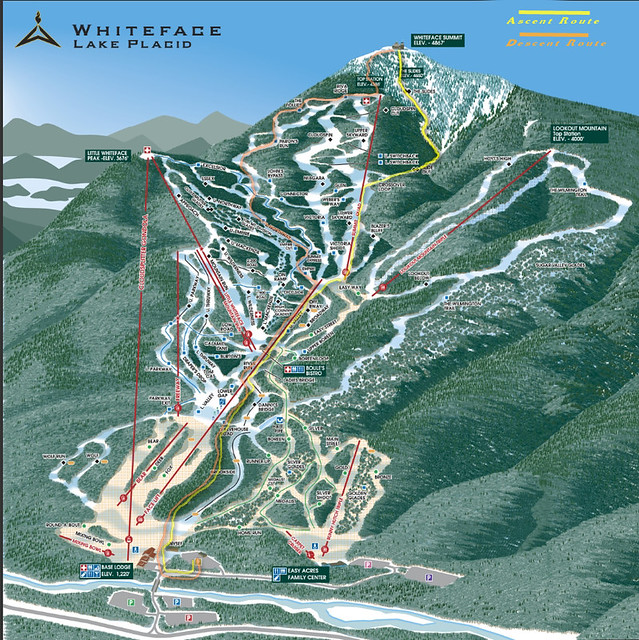Saturday, September 24, 2011
Taking Dix from both ends can leave you with a Whiteface!
Posted by
Justin Serpico
at
Saturday, September 24, 2011
1 comments
![]()
Long term consequences of improper streambed reconstruction in the Adirondacks post-Irene
 |
| Stream reconstruction on Styles Brook. Jay, NY. All photos courtesy Adirondack Council. |
 | |
| Gulf Brook. Keene, NY. |
 |
| Roaring Brook, now a ditch with water. |
-
-
Posted by
Justin Serpico
at
Saturday, September 24, 2011
1 comments
![]()
Technorati: Adirdonacks, Adirondack Park, APA, Article 14, Ausable, Cuomo, DEC, forest preserve, Forever Wild, Keene, Keene Valley
Tuesday, September 13, 2011
Dix Mountain Wilderness reopens effective 9/12/2011
More good news for all of us chomping at the bit to get back into the Dix Mountain Wilderness. Ok, that is pretty much me and a handful of people who need the 5 peaks for some patch. Nevertheless, the overlooked and under appreciated middle child of the Adirondack higher peaks wilderness areas is once again open for business and pleasure.
As a side note, my guess is the DEC never wanted to reopen the High Peaks as quickly as it did, but it bowed to pressure from the ADK and various local governments. After all, the High Peaks Wilderness complex is a cash cow for multiple towns in the Adirondacks. The Dix, however, was conveniently closed because it's monetary value to local governments is relatively small, while it's resource footprint for DEC staff was quite big during 73's reconstruction. With only the Elk Lake access point available, no local government benefited from revenues from hikers spending money while recreating. The irony, however, was that the Dix Mountain Wilderness saw relatively little damage and it's also the least trailed of the 3 closed areas.
STATUS OF DEC RECREATIONAL FACILITIES
September 12, 2011
AREA OPENINGS (9/12): DIX MOUNTAIN WILDERNESS and all trailheads along
Route 73 are once again OPEN, with the exception of the main Adirondack Mountain Reserve Trailhead at the Ausable Club.DEC has now reopened the three wilderness areas and a majority of trails that were closed as a result of damage from Hurricane Irene. However, some trails remain closed in both the Eastern
High Peaks and the Dix Mountain Wildernesses due to significant amount of blowdown, washed out bridges and eroded & cobbled trails .
TRAIL ADVISORIES (9/12): Trails that are not closed still may have bridges washed out and water levels in most rivers and brooks are at spring high water levels. Crossings may be impassable at this time. These trails may also have blowdown, eroded sections or flooded areas. Pay close attention as many trails have been rerouted to avoid heavily damaged sections and eroded drainages can be mistaken for trails. The ability to navigate with a map and compass
is important.
Posted by
Justin Serpico
at
Tuesday, September 13, 2011
0
comments
![]()
Technorati: Dix Mountain Wilderness, Dix Range, hiking, Irene, Macomb, post-Irene, slides
Monday, September 12, 2011
Route 73 from Exit 30 to Keene Valley is now open
Route 73, linking Keene Valley to the Northway (I-87) is now fully open. Initially only a single lane was planned to be open within 10 days, but the DOT, Governor Cuomo and private contractors put together an amazing feat and came out way ahead of schedule. Truly amazing based on the photos and descriptions of the level of destruction to Route 73.
Based on business numbers while the roadway was closed, it appears Route 73 truly is the lifeblood of Keene Valley. Business owners reported a 75% loss in business. However, this could also be attributed to the Adirondack Forest Preserve's; High Peaks Wilderness, Giant Mountain Wilderness and Dix Mountain Wilderness all being closed for much of that time. These happen to be 3 of the most popular wilderness areas in the park for 4 season recreation and contribute immensely to the local economies of surrounding hamlets. The Forest Preserve contributes over $1 billion yearly to the New York economy.
Full press release from Andrew Cuomo's office available here.
The red line on the map below outlines the section of Route 73 heavily damaged by Irene and now reopened to the driving public today. Good news, indeed, for leaf peepers, hikers, peak baggers, rock climbers and ultimately the business owners who benefit from the tremendous variety of recreational activities in America's premier weekend wilderness!
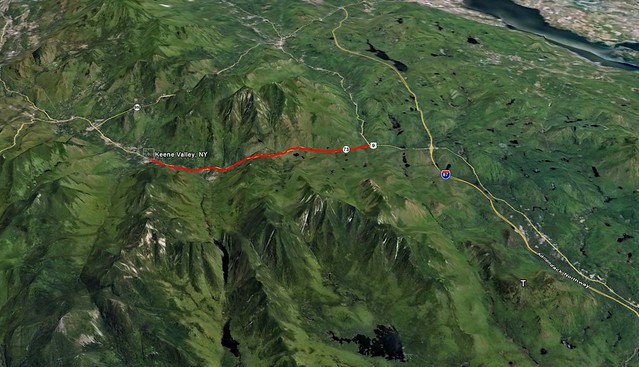
Posted by
Justin Serpico
at
Monday, September 12, 2011
0
comments
![]()
Technorati: Adirondacks, climbing, High Peaks, hiking, Irene, Keene Valley, Lake Placid, post-Irene, Route 73
Friday, September 9, 2011
Scars of Irene on the Adirondack backcountry
This video is from the Adirondack Wild Center based in Tupper Lake, NY.
The aerial and ground based HD video is pretty compelling in both terms of destruction and the natural beauty of the Adirondacks. While watching it I couldn't help but be reminded why no matter where I am, I always seem to compare it to America's first wilderness -the Adirondacks.
Combined with the still images of the backcountry from the previous post, this should really start to put together the pieces of the puzzle that merely reading written reports left us unable to do.
Also of note, it appears this video was shot several days after the initial destruction, so things look pretty clean and orderly in the towns, in spite of the level of damage. Much of which was caused by relatively small streams jumping their banks. In Keene it was Gulf Brook, a stream that is less than 20ft wide most of the year, and that you can almost jump across in many sections just a few miles from Keene.
Those watching this from other parts of the country or world should be aware that the video covers a very small section of the New York State Forest Preserve, mainly the Eastern High Peaks Wilderness and surrounding towns. Though this is the most popular part of the Adirondacks, there are millions of acres that were largely unscathed from Irene, and also offer tremendous scenic beauty.
Posted by
Justin Serpico
at
Friday, September 09, 2011
0
comments
![]()
Technorati: Adirondacks, ADK, forest preserve, High Peaks, hiking, Irene, post-Irene, Wild Center
Thursday, September 8, 2011
Images of the the aftermath of hurricane Irene on the Adirondack High Peaks and John's Brook Valley
I highly advise anyone with some backcountry aspirations to take a look at the destruction -and in some ways, improvements- to the Adirondack backcountry as seen through the lens of Brendan Wiltse.
Some great photographs of the damage in an area not yet open to the hiking public: Hurricane Irene damage to the Adirondack High Peaks, John's Brook Valley Region, including several new slides along existing trails.
I say improvements because anyone that has hiked the Orebed trail will certainly appreciate it is no longer a steep, slick, slabby tree tunnel, but it now has some views and the trail is more like a true slide climb than an eroded hiking path. I always hated that trail, even more so when the ladders were missing this spring and early summer. Sadly, the Adirondack Mountain Club Pro trail crew was putting in new ladders just before the storm. Much of their work destroyed and mixed in with rubble from the slides.
Oddly, while a lot of damage was also done to lowland approach trails that is not good, the potential new routes up slides, and the opening up of the terrain on existing trails actually looks like it is a long term benefit. It will be interesting to see first hand just how different the views are off the mountains of the Adirondacks.
Also from Brendan's blog:
Posted by
Justin Serpico
at
Thursday, September 08, 2011
0
comments
![]()
Technorati: Adirondacks, ADK, climbing, High Peaks, hiking, John's Brook, John's Brook Lodge, slides
Saturday, September 3, 2011
Adirondack Park is still open for business post-Irene!!!
While en route to Whiteface Mountain and the Whiteface Slides on Friday (separate blog post/trip report), driving through Keene, Upper Jay, and many other areas of the Adirondacks, seeing the devastation created, in many places by relatively small innocuous brooks, really put things into perspective. Businesses, and worse, homes were destroyed. Peoples personal belongings put out to the curb or in there yards to be carted away. Beyond that towns pretty much cut off from the Northway and even other parts of the Adirondacks in what is the busiest month of the year. Labor Day through Columbus Day/Canadian Thanksgiving, this 6 weeks is perhaps the most important of the year for the bottom line of businesses. Labor Day is gone, there is hope that the roads and infrastructure can be ready for Columbus Day/Canadian Thanksgiving weekend to perhaps soften the blow.
There is tremendous misinformation about what is open, what is closed. And even on scene things were difficult to discern. 9N beyond Jay was closed last night, though I'd heard previously roads into Ausable Forks had reopened. 9N between Upper Jay and Keene is also open only to local traffic and because we already had made one mistake, we chose to not drive 9N to see how much of it is closed or if it is in fact passable all the way through.
That said, the Forest Preserve/Adirondack Park is open for business. There are over 6 Million acres of land inside the Blue Line (the line on maps that denotes what most people refer to as Adirondack State Park, though it is not a state park at all, it's really not even a park). Of that 6 million acres -an area the size of either Vermont or New Hampshire- the state owns or has easements to close to 4 million acres. Of that 4 million acres, only about 300,000 is closed. That means that all areas of the park, including Long Lake, Old Forge, Indian Lake, Lake Placid, Saranac Lake, Tupper Lake, Speculator, Cranberry Lake, and countless others are open and have outdoor recreation available.
However, the areas that are closed are being enforced, and I'd recommend really not testing the police powers of the NYS-DEC Forest Rangers or ECO's. I know these guys are nicer than your average cop, and they are probably the only law enforcement officers that I am generally happy to encounter, but they have all the authority and quite a bit more than a New York State Trooper. The difference is they don't approach you as a criminal as cops are trained to do, so people often forget they do have tremendous authority. Personally, I don't see why a forest needs to be safety inspected for my use, afterall, many of us are happy to hike or climb up unmarked routes in the first place. But I'm going to respect the authority of the state to do what it needs to do on the Forest Preserve, and also realize that many people simply do not have the backcountry skills to deal with the potential damage.
Nevertheless, there might be a silver lining to all this. Many people get fixated on "High Peaks" and forget that sometimes the little peaks are pretty awesome too. This weekend is a great opportunity to explore other areas. I recommend Catamount, Whiteface, Silver Lake Mountain, Hurricane Mountain Primitive Area, the (officially) trail less Jay Wilderness (if roads allow access, possibly not yet), McKenzie Mountain Wilderness, Sentinel Range Wilderness. These are all in the Lake Placid/High Peaks Region. Also, the Western High Peaks is open for business. This includes 7 High Peaks, and the wonderful, yet often ignored Ampersand Mountain.
Ampersand to me is the Adirondacks! It's perfectly positioned between the High Peaks and Nortern/Western Lake Country. What a view!
I cannot forget Debar Mountain, Lyon Mountain and St Regis Mountain, all a little further north and east or west. Or Goodenow, Vanderwhacker, and Mount Adams to the south.
One last note, Keene Valley business district is open for business. There are quite a few nice shops in Keene Valley, and the town is cut off from it's lifeblood traffic from the Northway. And with the High Peaks Wilderness on lockdown, no one really has a reason to visit Keene Valley. Worse, the DOT has put up a roadblock in Keene inferring that Keene Valley is closed. KEENE VALLEY IS NOT CLOSED FOR BUSINESS! If nothing else, stop by the Mountaineer for some shopping, eat dinner at the Ausable Inn and visit the Noonmark Diner for a piece of pie! It would be a shame to see any of these places close due to this. The Mountaineer is one of the friendliest most helpful shops I have ever dealt with, and the two restaurants are pretty tasty too!
Posted by
Justin Serpico
at
Saturday, September 03, 2011
0
comments
![]()
Technorati: Adirondacks, Canadian Thanksgiving, Columbus Day, hiking, Irene, Keene, Keene Valley, Labor Day, NYS-DEC, the Mountaineer








